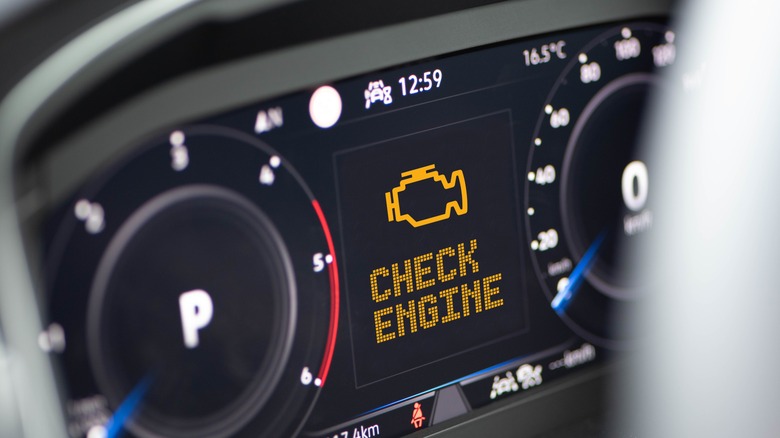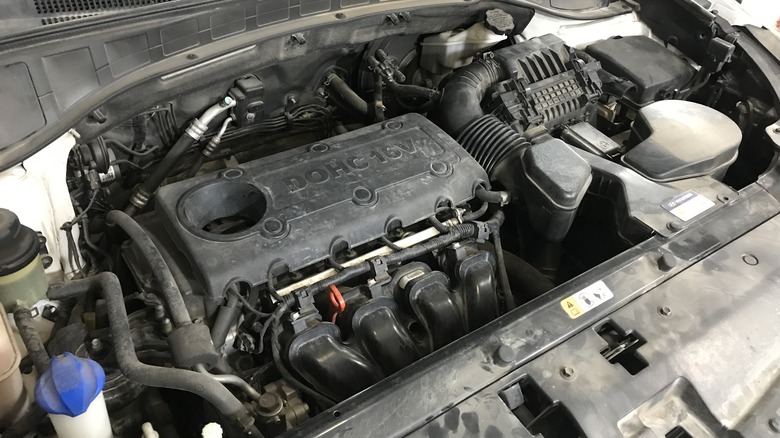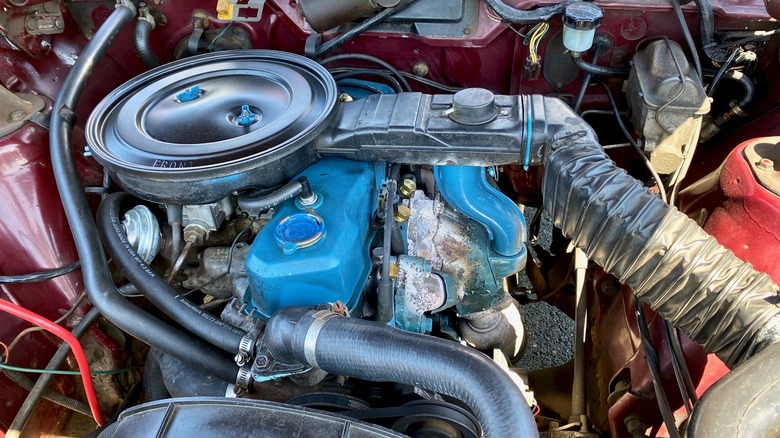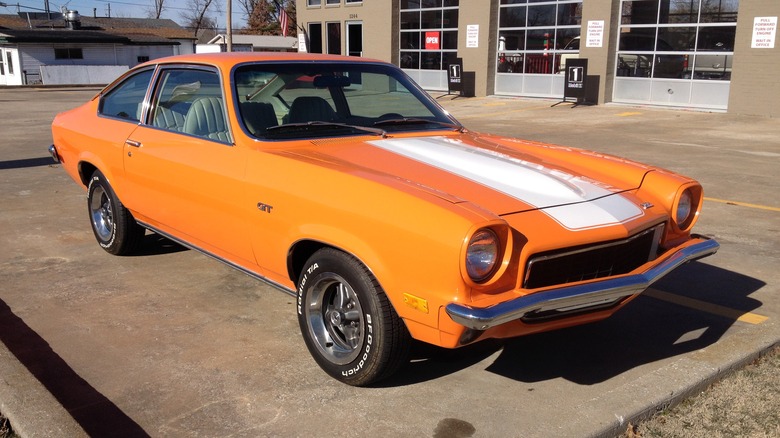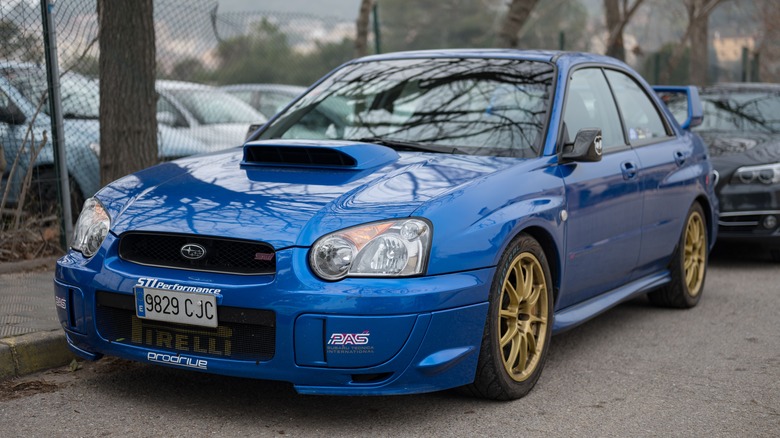4 Of The Worst Four-Cylinder Engines Ever Made
Four-cylinder engines have long been celebrated for offering a great balance of fuel economy and affordability without the need to sacrifice everyday drivability. But not every four-pot powerplant lives up to this promise. In fact, a few have been so problematic that they damaged brand reputations, prompted massive recalls, or sent owners scrambling for early engine replacements.
Whether it was bold engineering gone wrong or cost-cutting gone too far, the engines in this list serve as cautionary tales. Some were catastrophically unreliable, while others were just misfit solutions that lingered too long on automaker lineups. From GM's Ecotec failure, which resulted in a class action lawsuit, to Subaru's beloved but betrayed flat-fours, these engines proved that smaller doesn't always mean smarter.
In this piece, we're going to dive into four of the worst four-cylinder engines ever made — factoring in performance issues, reliability, and their broader impact on the automotive landscape. These aren't just underpowered commuters, but a collection of mechanical misfires that made ownership a headache. Avoid these lemons at all costs.
Theta II: Hyundai's explosive engine problem
Hyundai's Theta II engine, particularly the 2.4-liter GDI variant, has become infamous for all the wrong reasons. Used across a wide range of models including the Hyundai Sonata Kia Optima, the Theta II was plagued by design flaw that allowed metal debris to restrict oil flow to critical internal components. The result? Catastrophic engine failure, often at highway speeds, without warning.
Unfortunately for Hyundai and its unlucky customers, the issue was so widespread that it prompted one of the industry's largest ever engine-related recalls at about 470,000 vehicles. In 2019, Hyundai and Kia both agreed to a massive settlement following multiple-class action lawsuits. The companies also extended warranties and rolled out a knock sensor detection system in a last-minute attempt to prevent failures — but by then, damage to their reputations had already taken root.
Hyundai's Theta II engine came in two guises, a 2.0-liter and a 2.4-liter, with both being intended to provide a solid blend of efficiency and everyday grunt, although the execution was fundamentally flawed. The faulty engines were built from 2010 at the Hyundai Alabama plant, with failures and other issues having been reported in various models from 2011 to 2017. The Theta II engine problems primarily affected the Hyundai Santa Fe, Tucson, and Sonata and the Kia Sorento and Optima Hybrid. The issue stemmed from manufacturing defects that lead to engine knocking, stalling, and complete engine failure. Some Hyundai engines are more reliable than others, so if you're considering a used Hyundai or Kia from this era, it's best you do your due diligence.
GM Iron Duke: The unbreakable engine no one wanted
General Motors unveiled the 2.5-liter Iron Duke engine in late 1970s in response to the oil crises and growing demand for more fuel-efficient cars. Designed for simplicity and durability, built with a cast-iron block and head, this inline-four generated a meager 87 horsepower and 123 pound-feet of torque. Its strong build gained it a reputation for dependability, which led to GM using it across its lineup, including models like the Pontiac Fiero, Chevrolet S-10, and even the Grumman LLV mail trucks.
Though the Iron Duke was trustworthy, it was seriously underpowered. Its poor performance was particularly apparent when fitted in cars such as the 1982 Chevrolet Camaro, where its sub-100 horsepower output produced painstakingly slow acceleration. Both consumers and auto reporters criticized this mismatch between engine capability and vehicle expectations. To exacerbate its problems even more, the Iron Duke suffered horribly from excessive noise, vibration, and harshness, compromising the entire driving experience.
The Iron Duke's fuel economy and dependability came at the heavy expense of performance and refinement, but, ironically, it was the engines' very flaws that made them last for years on the road, understressed and simple.
Chevy Vega 2.3L: Innovation gone horribly wrong
The 2.3-liter inline-four in the Chevrolet Vega was one of the boldest — and most disastrous — experiments in design from a major automaker. GM attempted to innovate with an aluminum engine block that didn't use traditional iron liners. In theory, it would save weight and cost, in reality, it turned the Vega into one of then worst cars in GM's history.
Heat management was an absolute nightmare. These engines were prone to warping, leaking, and excessive oil consumption. Without liners, the cylinder walls quickly deteriorated, and overheating was almost inevitable courtesy of a poorly designed cooling system. Even loyal GM fans couldn't overlook how quickly these engines self-destructed.
The Vega's engine troubles not only doomed the model but also became symbolic of the broader quality issues plaguing General Motors at the time. Despite is sleek design and marketing push, the Vega — and its infamously flawed powerplant — ended up on countless "worst of" lists. It was an engine that could have been groundbreaking, but instead broke down — and broke hearts.
Subaru EJ Series: The head gasket king
Subaru's EJ-series flat-four engines powered some of the brand's most beloved vehicles — including the Impreza, Forester, and Outback — but they also earned a notorious reputation for one recurring issue: head gasket failure. In particular, the EJ25, found in many models from the late '90s through to the mid-2000s, was plagued by cooling and sealing issues that left owners facing expensive repairs, after which the EJ engine was discontinued.
The design of the boxer engine itself contributed to the problem. Its horizontal layout and use of cast pistons and rods made it difficult to effectively dissipate heat and exacerbated gasket wear, as well as having bad oil passages for its rod bearings. The failures were so common that independent Subaru specialists built their business around preventative head gasket repairs.
To be fair, these engines offered a great driving experience — a low center of gravity, solid torque, and that unmistakable Subaru thrum. But the long-term ownership experience often included costly fixes well before the 150,000-mile mark. In an era where competitors offered bulletproof engines, Subaru's EJ showed that performance and reliability can sometimes be the worst enemies. It may have had rally cred, but for everyday owners, it was a financial pothole.
